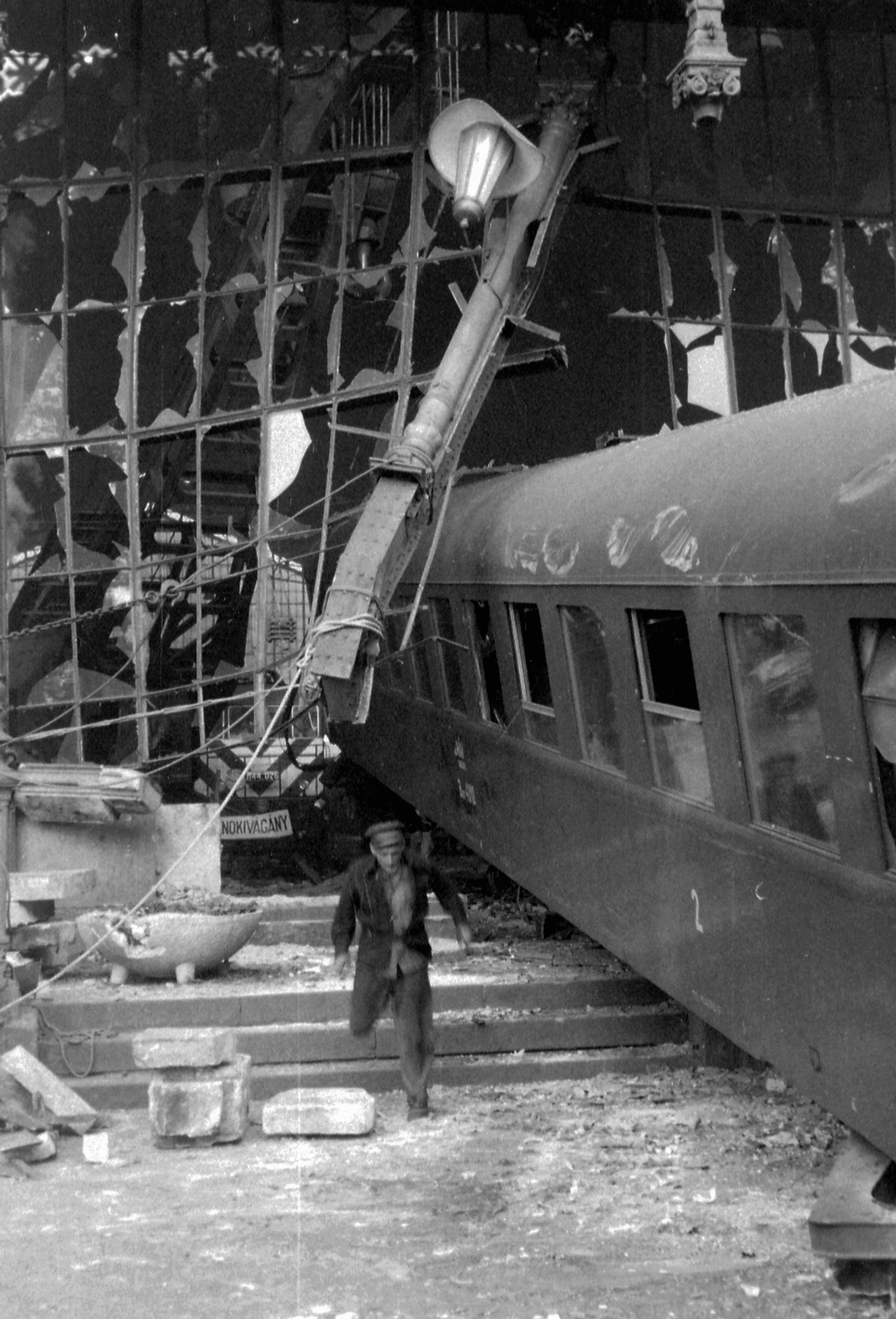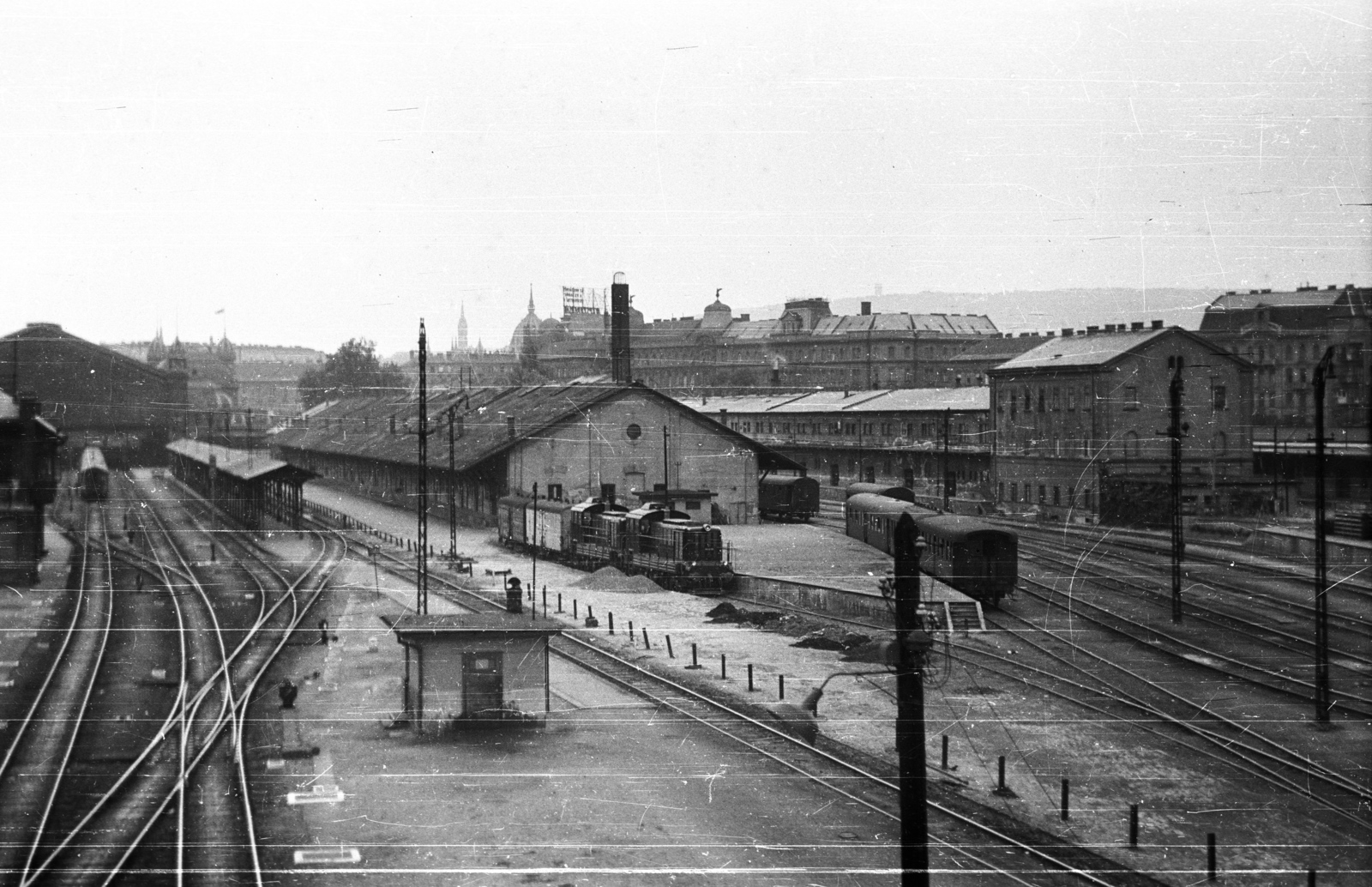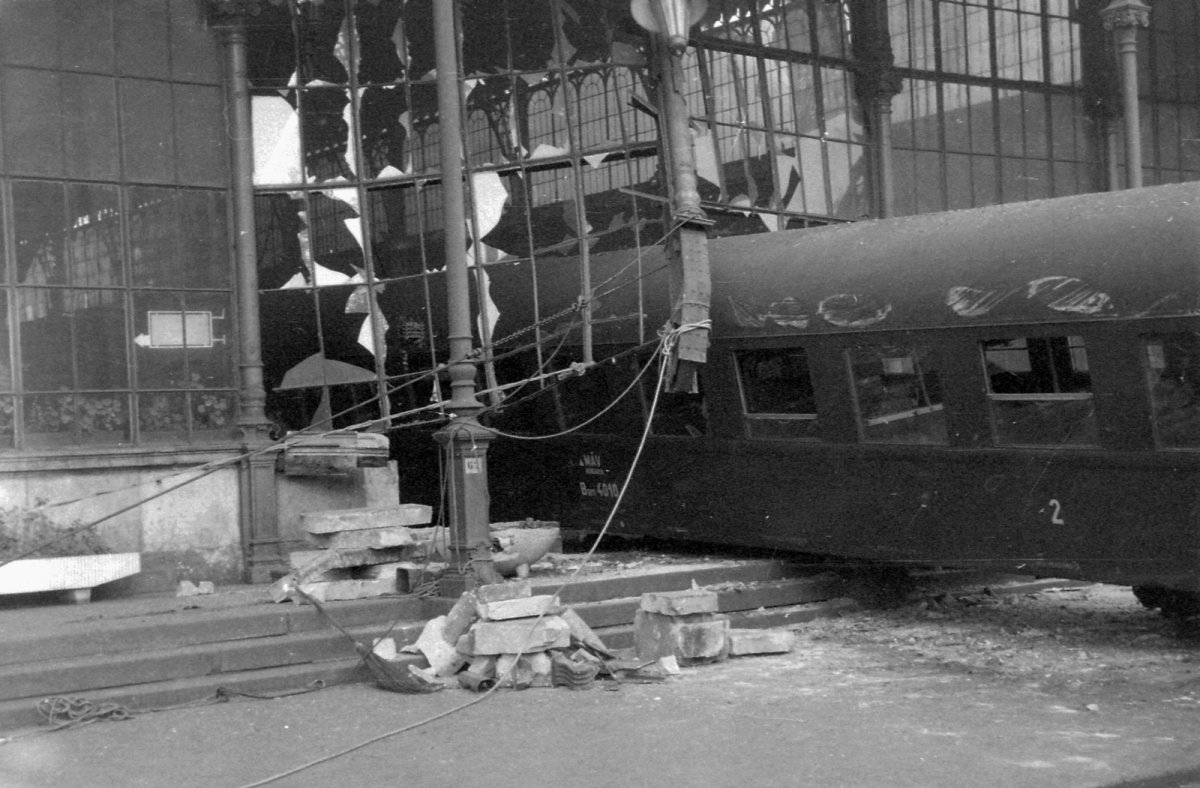A shocking accident happened 60 years ago at the Nyugati (Western) Railway Station: a railway carriage broke the buffer stop at the end of the track and broke through the glass wall onto the Outer Ring Road. Moreover, it did not break free on its own, but 10 carriages broke off from a passenger train, and the last car of this train ran over the wall and into the street. Fortunately, there were no fatalities in the accident. The following day, the 5 October 1962 issue of Magyar Nemzet described the events as follows:
"At 2:21 p.m. on Thursday, an empty train, which was supposed to leave for Szolnok five minutes before 4:45 p.m., was shunted onto track 4 of the Nyugati Railway Station. While shunting, ten cars of the train separated from the locomotive due to a lack of braking and ran off the track in the direction of Lenin Boulevard. One of the ten carriages broke through the main entrance of the station building and went over the stairs and the sidewalk onto the roadway."
In the accident that took place on the then Lenin Boulevard - now Teréz Boulevard - one person was more seriously injured, Jenő Párkányi, whose full name, but also his address, was published. The accident disturbed the traffic at the railway station slightly but the coverage mentioned that the traffic on the other tracks was undisturbed. The traffic on the Outer Ring Road was only blocked for a short time, just two hours, by the train car, and it was lifted back onto the tracks almost immediately.

Traffic on the Outer Ring Road at Nyugati in 1961 (Photo: Fortepan, ETH Zurich)
Typically for the era, the article appeared in Magyar Nemzet only on page 3, that day's editorial was about a statement about the Soviet-Yugoslav negotiations, and the presentation of the museum month was more important than what happened on the Outer Ring Road. (The news was only published on page 8 in Népszabadság, although it was on the front page in Népszava.)
But what exactly happened at the Nyugati Railway Station? When the passenger train was shunting, ten cars of the train broke off at the Ferdinánd Bridge, and the momentum carried it on from there. The station's 1st railway guard tower immediately noticed that something was wrong, and since the public address centre was also located here, they were able to warn the people at the station about the impending accident before the railway cars hit the buffer stop. In the end, the out-of-control train car travelled 14 metres outside the building. If it had gone a little further, it could have been much worse, because the packed tram 6 arrived at the stop opposite the station building at the time of the accident.

The railway car outside the station (Photo: Fortepan, Magyar Rendőr)
The fact that there was no mass catastrophe on the street is thanks to the station gatekeeper, Ferenc Deák, who ran out into the street to warn passers-by. According to the 18 October 1962 edition of Esti Hírlap, he did the following:
“He jumps out into the street. Four men and one woman are standing in front of the glass wall. A few more seconds and the wall will break! "Be careful, people, be careful!" He screams. People are jumping away. Pedestrians are startled by people running down the stairs. The sidewalk is empty. Opposite, at the stop, there is a packed tram 6. Fortunately, there are no cars on the road, perhaps the traffic light at Rudas László Street indicates that it is prohibited. The gatekeeper then only sees this: The carriage breaks through the buffer stop, then runs onto the platform, followed by dust, sparks, banging, screeching, clattering, glass falling, iron breaking, and the car is already outside the wall. A pillar stands in the way of the carriage, the railway carriage hits it, the pillar breaks, but it reduces momentum and speed. . . The carriage stops three metres before the tram."
Fortunately, the accident resulted in only one serious, but not life-threatening injury, and approximately 100,000 HUF (almost 12 million at today's prices) damage.
The railway experts and the firemen took action immediately, and the carriage was lifted back into the station hall at half past four, with barely 20 minutes of work. There was still time for the Filmhírádó crew, whose recordings were shown in theatres before big movies, to come to record the rescue.
Of course, the police launched an investigation and found negligence on the part of two railway employees. The shunting leader thought that the marshalling yard shunter knew that it was necessary to check the coupling of the cars. Therefore, he did not give instructions for this, even though according to the rules, separate instructions should have been given for this inspection, and moreover, the marshalling yard shunter was a beginner. Because of this, the other 10 carriages were not attached to the guard's van connected to the locomotive, and they could thus get out of control. A total of three people were sentenced to 1 year or 8 months in prison, but they did not have to go to prison because of the 1963 amnesty, although they were fired from the MÁV (Hungarian State Railways).

The carriages got out of control from here, off the Ferdinand Bridge. The picture was taken in 1963 (Photo: Fortepan/Reference No.: 70602)
The case is shocking to today's eyes, but it is not unique, as a similar accident has happened several times in Hungary. The first time a locomotive ran out of the station at the Déli (Southern) Railway Station was in 1948. A similar case also happened in the 21st century, in 2004 an Intercity car broke the buffer stop while shunting at Déli Railway Station and ended up stopping in a fast food restaurant, and in 2019 a similar but much smaller accident also happened in Érd.
Filmhíradó - Railway accident at the Nyugati Railway Station (in Hungarian)
Cover photo: Image of the accident (Photo: Fortepan, Magyar Rendőr)




































Hozzászólások
Log in or register to comment!
Login Registration